Abstract
Behavior analysis is a cultural system of which the Association for Behavior Analysis is a component cultural system. As cultural systems, they are composed of interlocking behavioral contingencies that constitute their cultural practices. Critical to the survival of both cultural systems is the frequency of interaction with and the nature of the content of the behavioral contingencies composing those cultural practices. The strengths of behavior analysis as a cultural system include its disciplinary character and its worldwide community of scientists and practitioners; its ability to be integrated into a scientific worldview; its track record in providing effective solutions to problems of importance to society; and the high levels of intellect, competence, and commitment that are characteristic of its participants. Weaknesses of behavior analysis are its status as an academic orphan, its relatively small size and its underdeveloped professional identity, and a lack of sociopolitical sophistication among many of its members. Behavior analysis will need to maximize its strengths and mitigate its weaknesses if it is to take advantage of the many opportunities available for growth in the modern world.
Keywords: strategic overview, butterfly effect, credentialing, related disciplines, public understanding, behavior analysis
Full text
PDF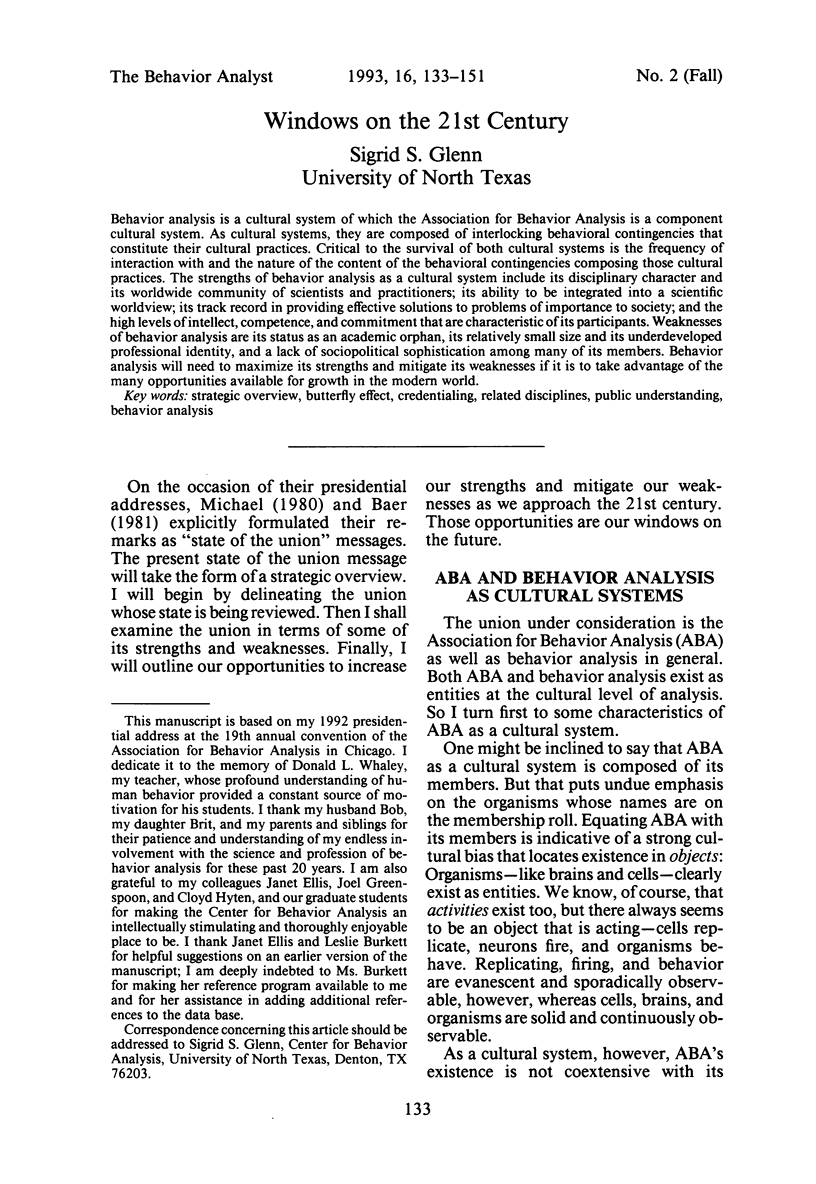
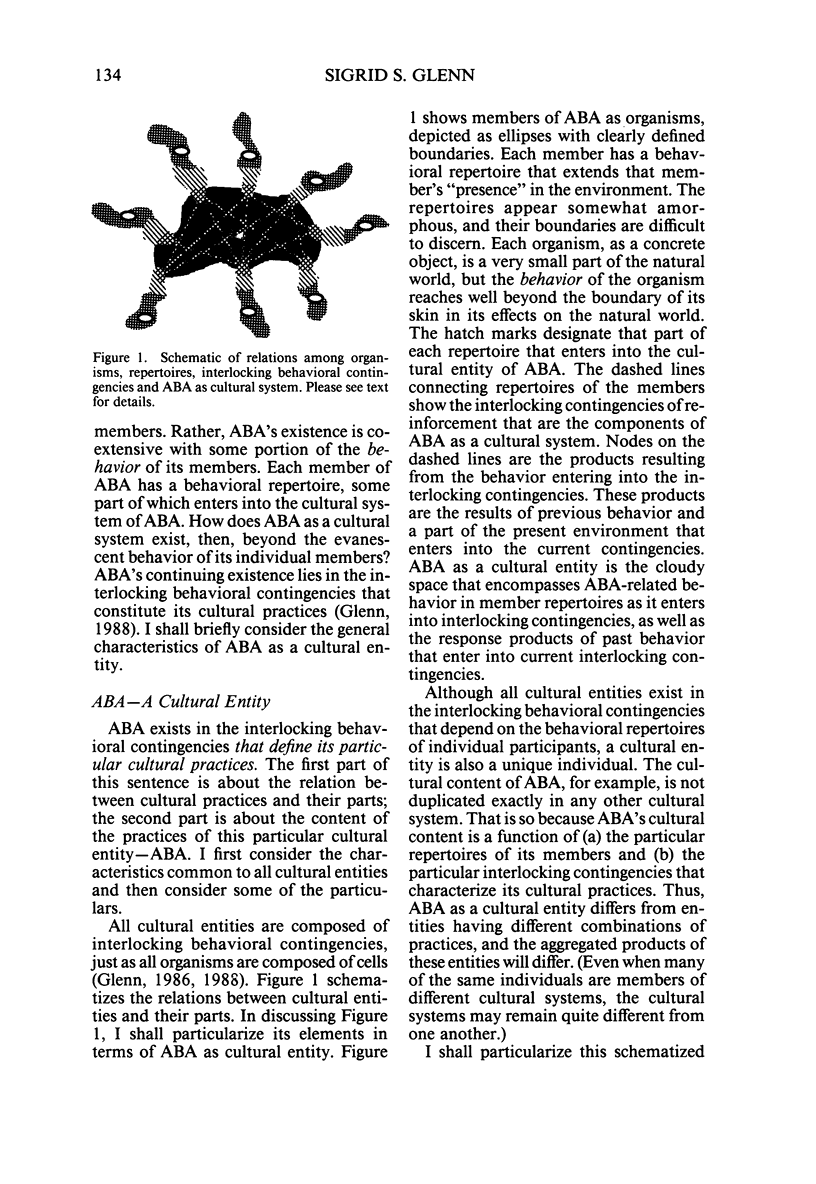
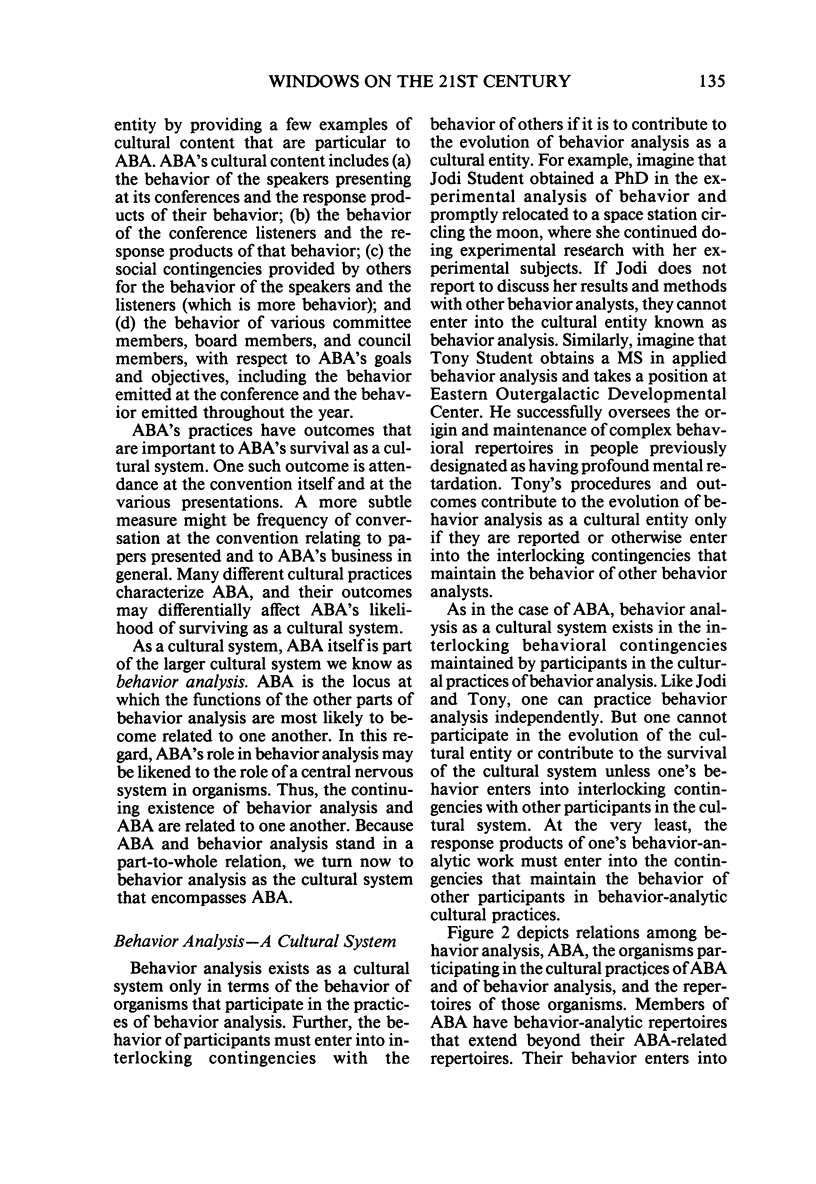
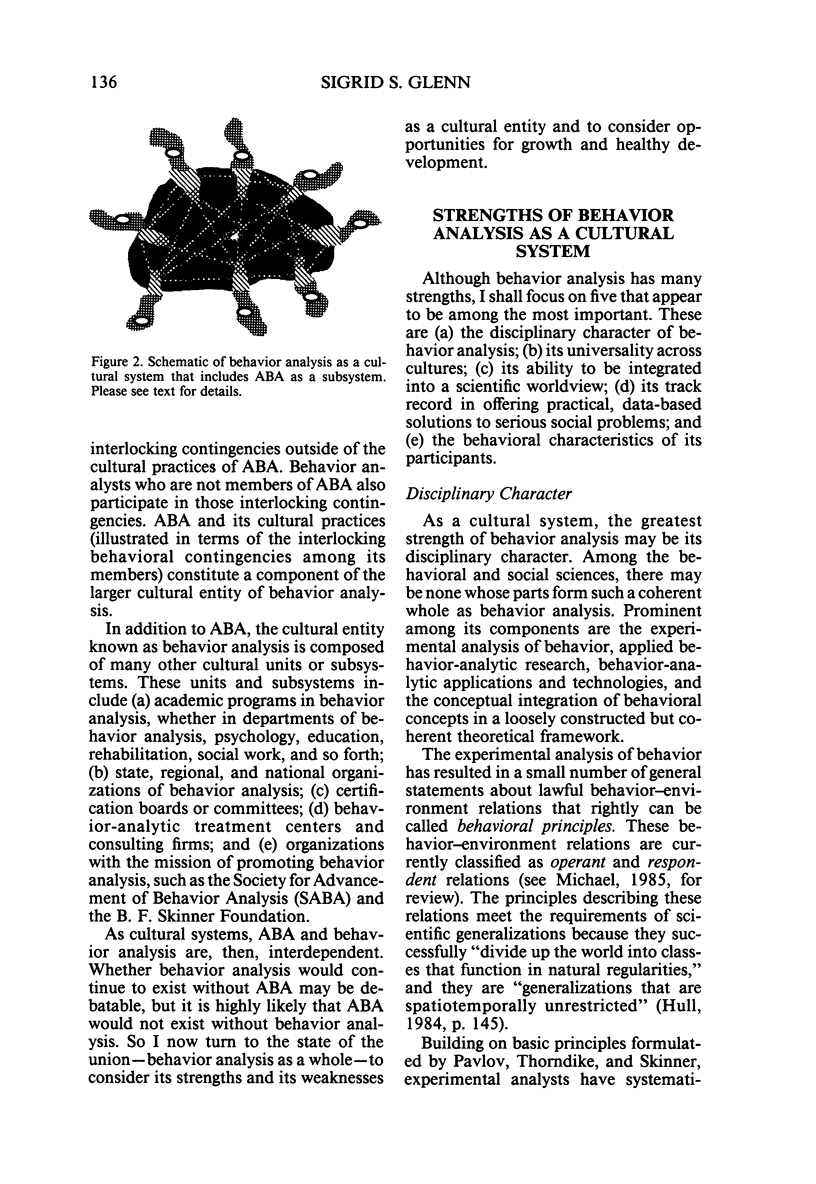
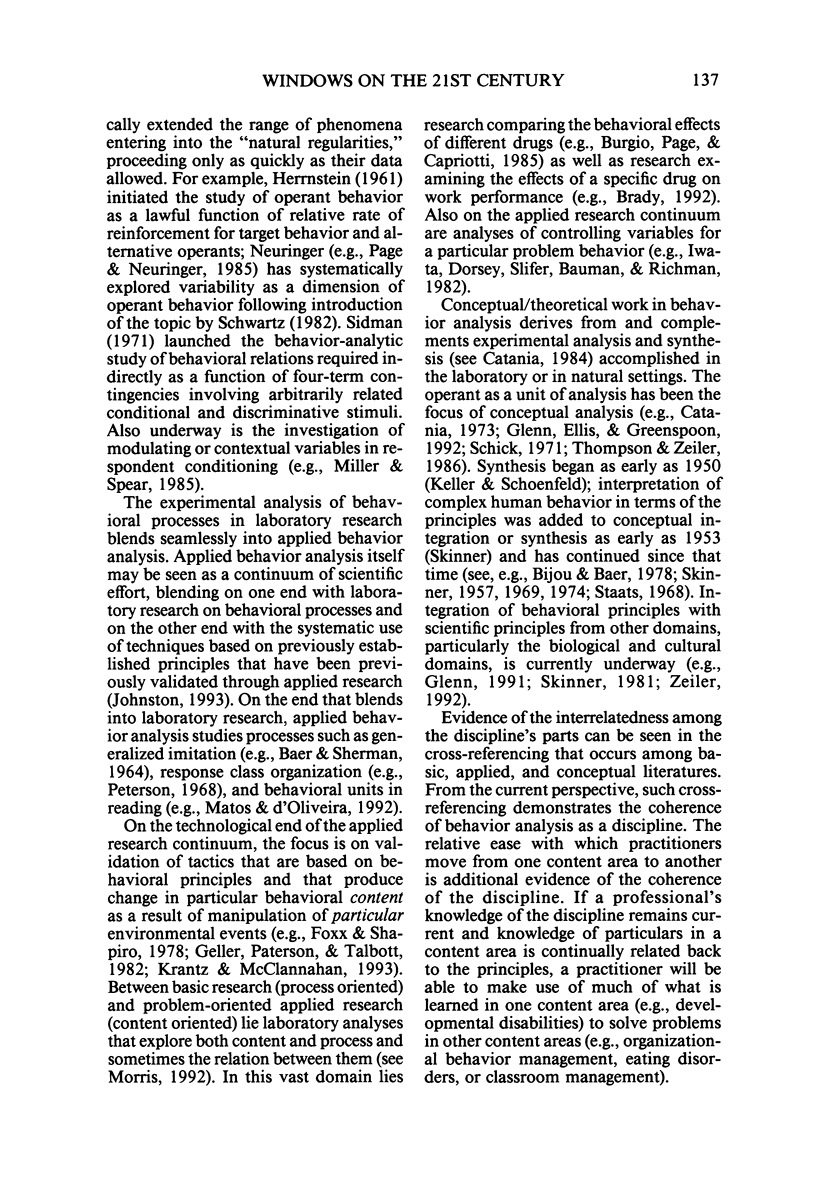
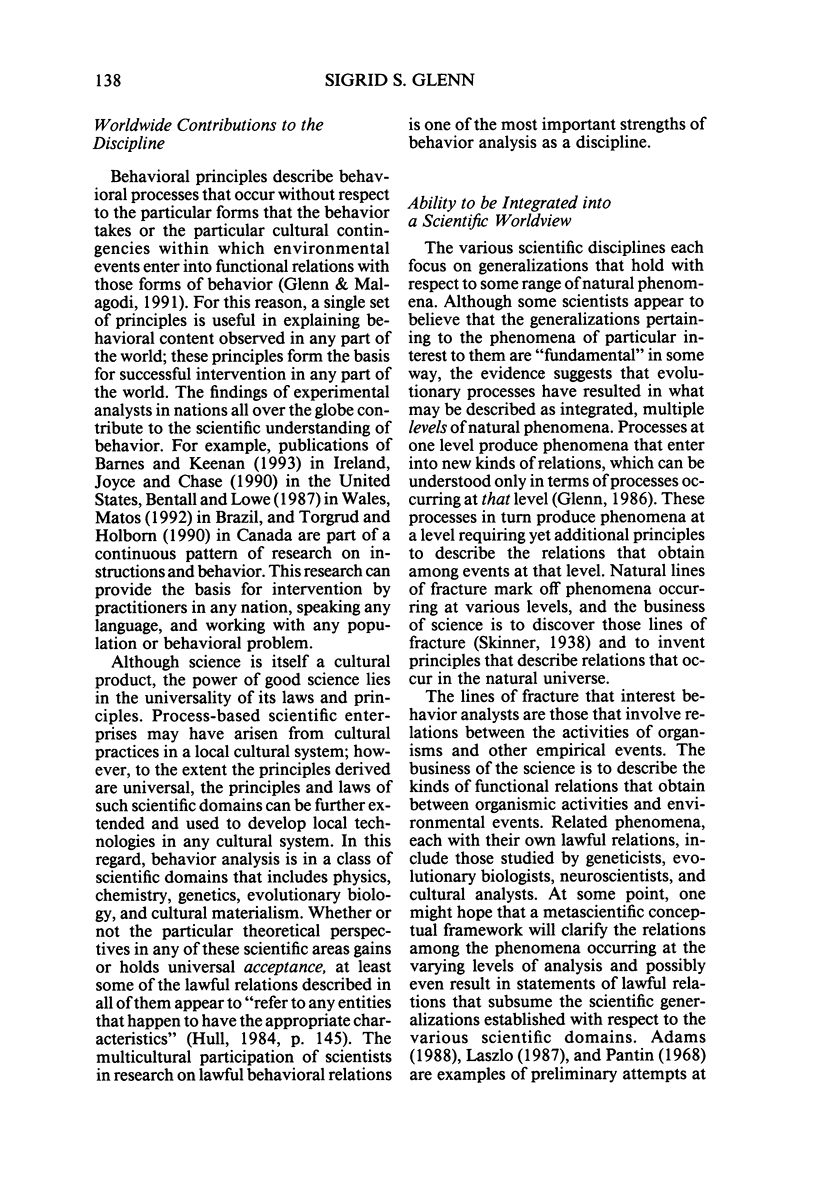
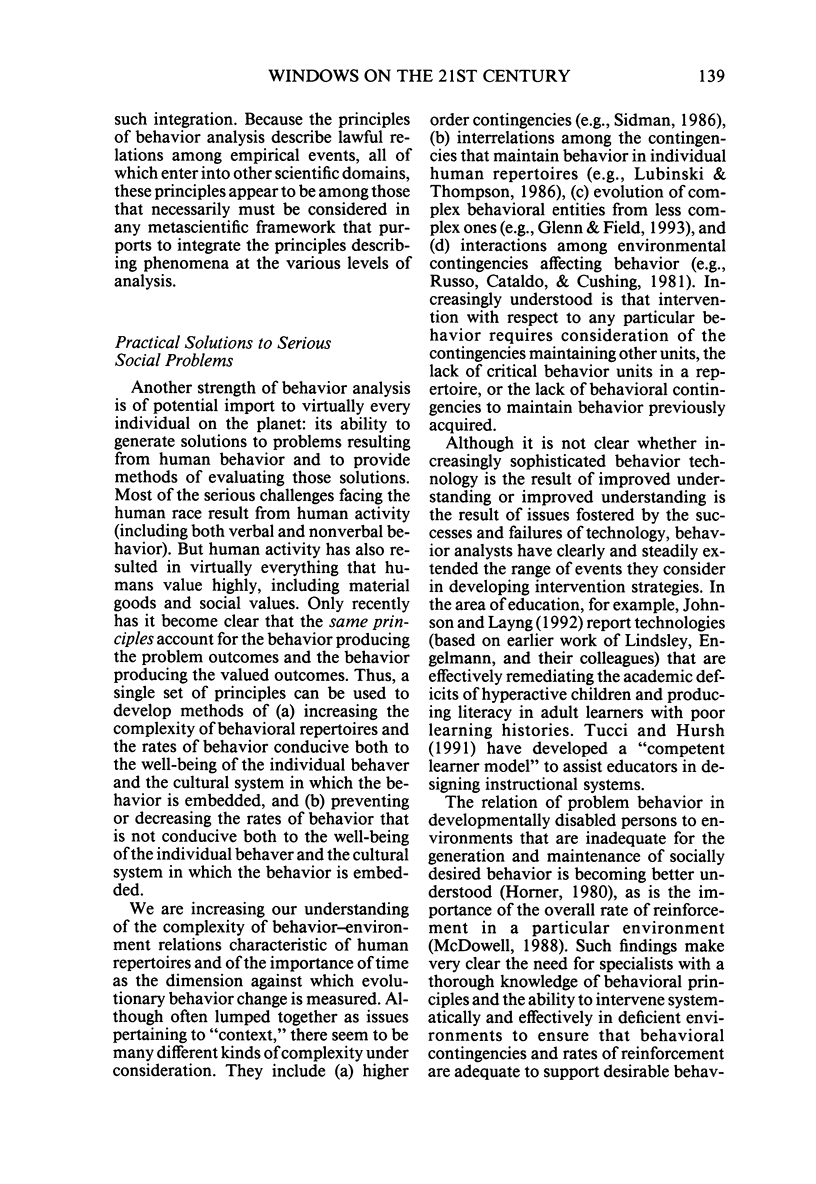
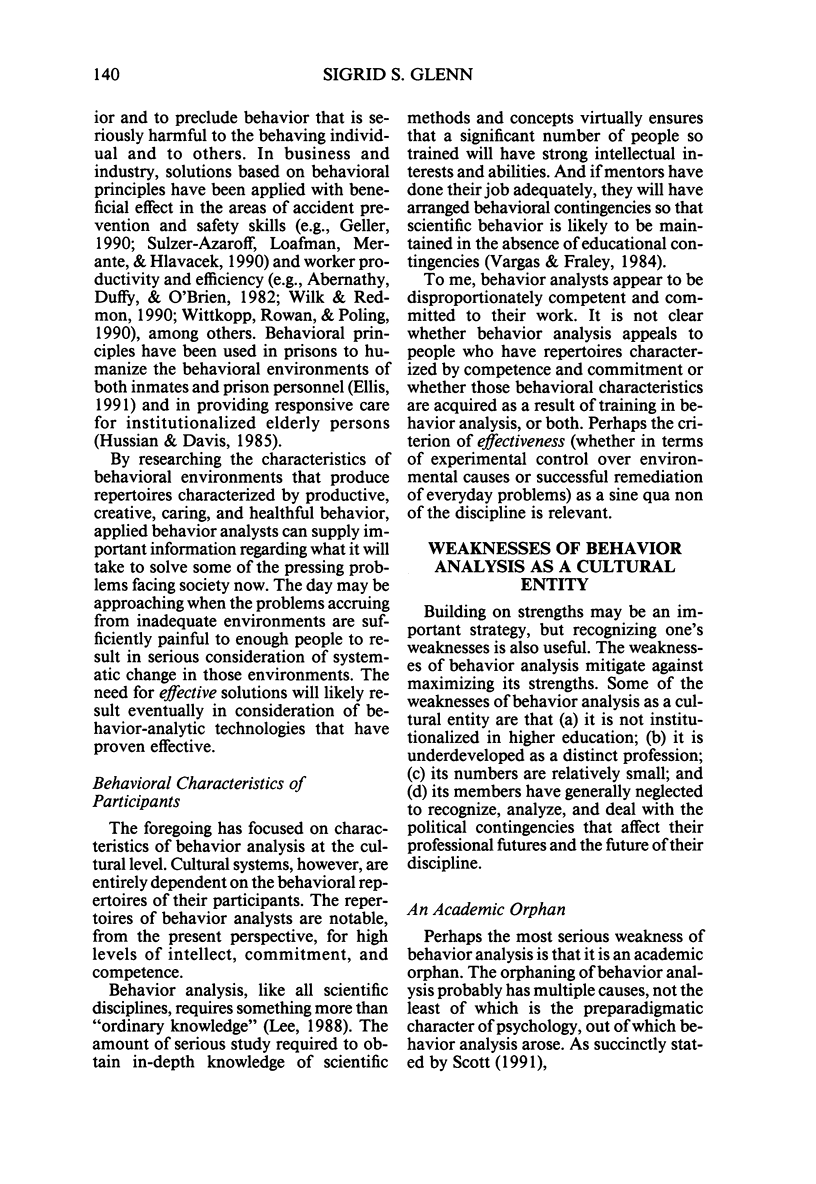
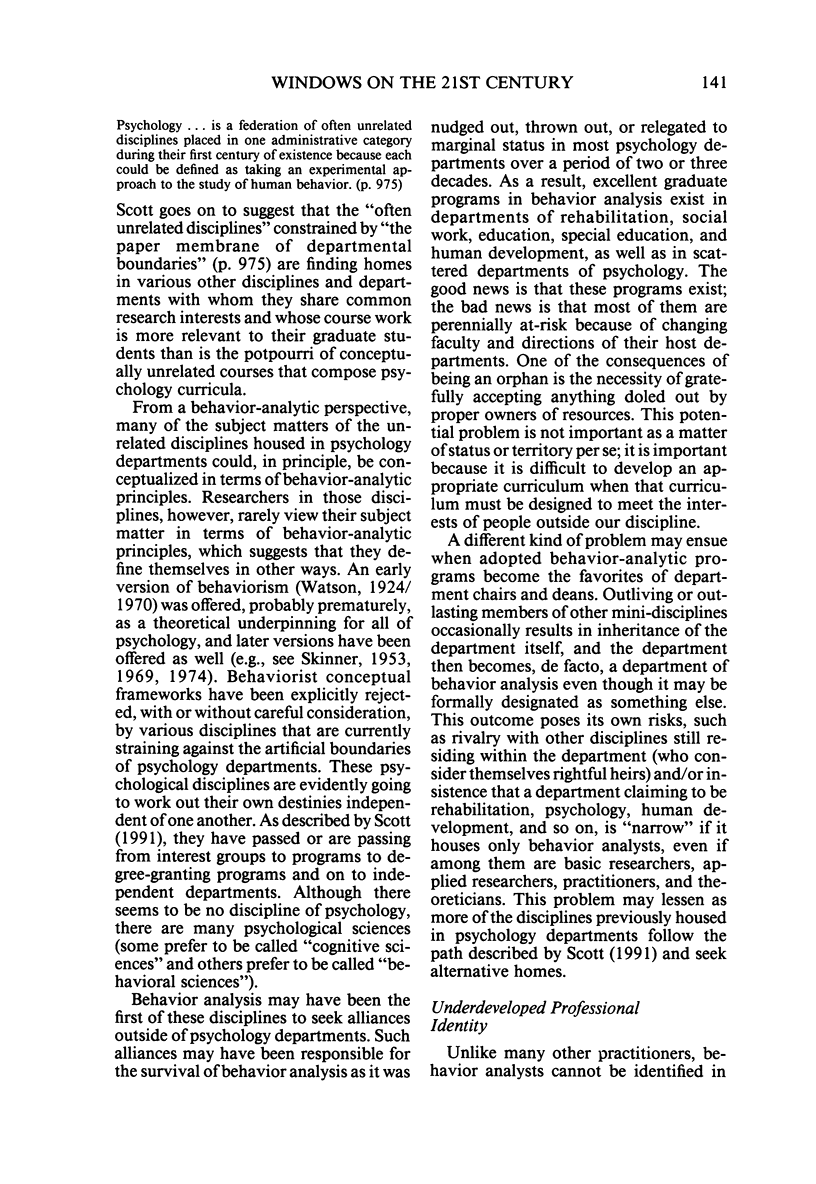
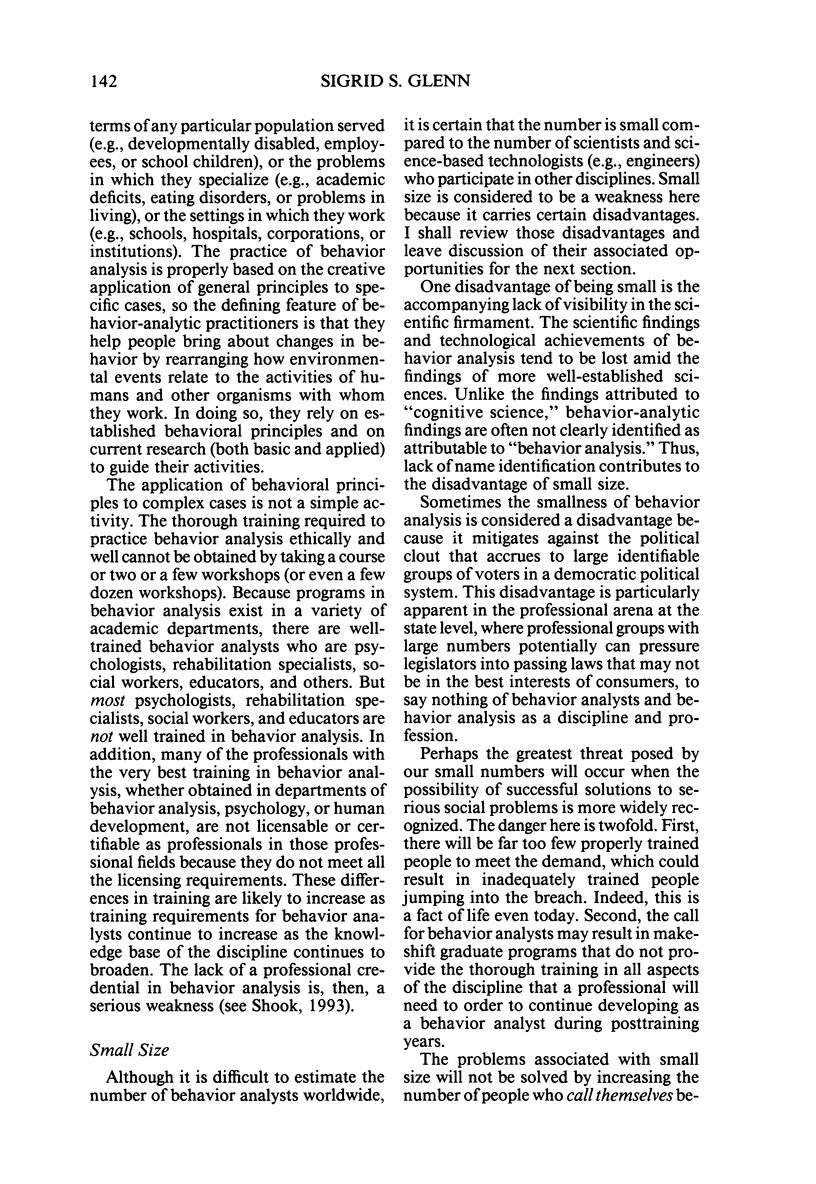
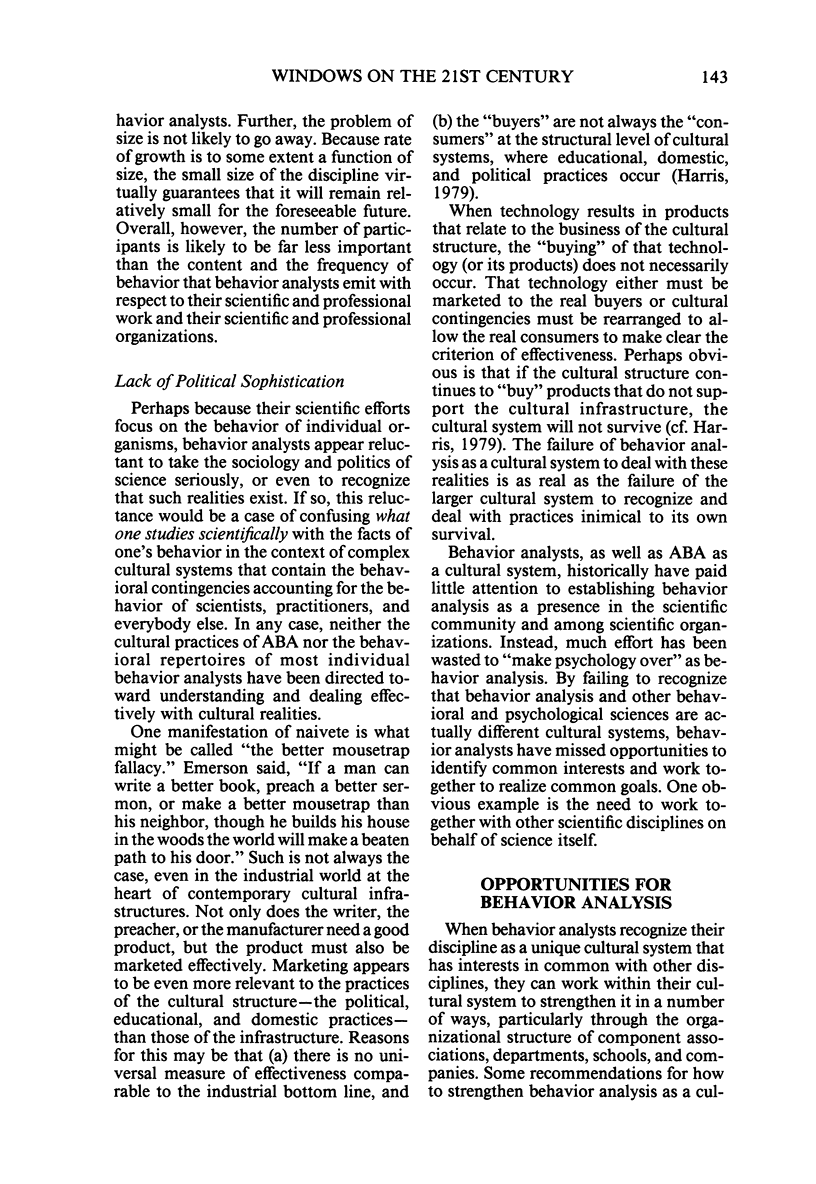
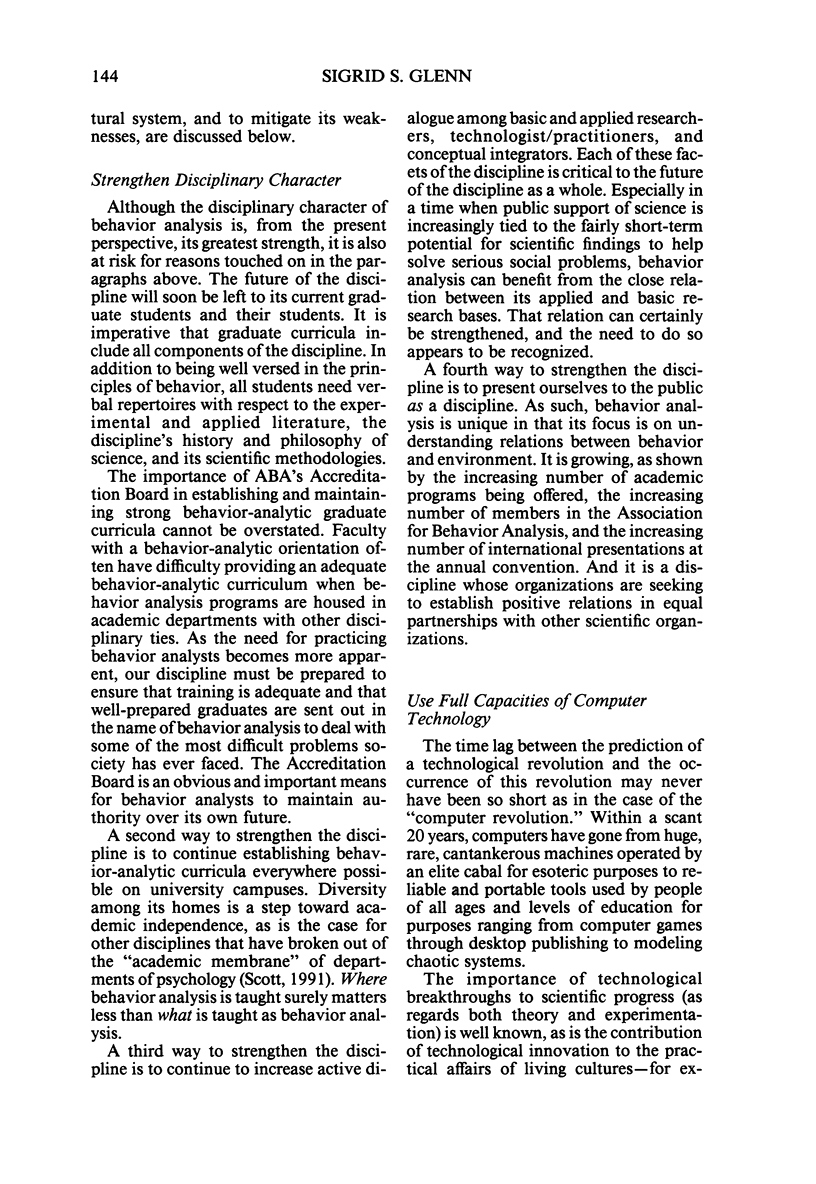
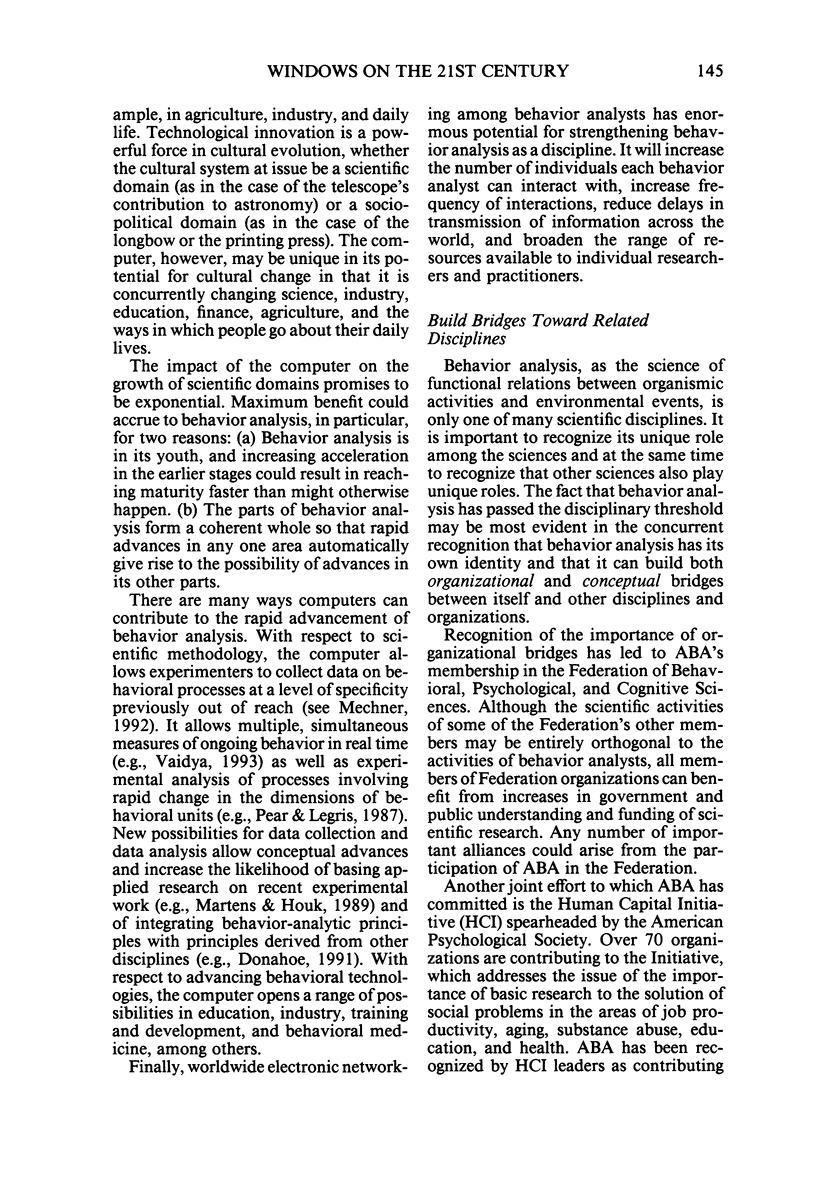
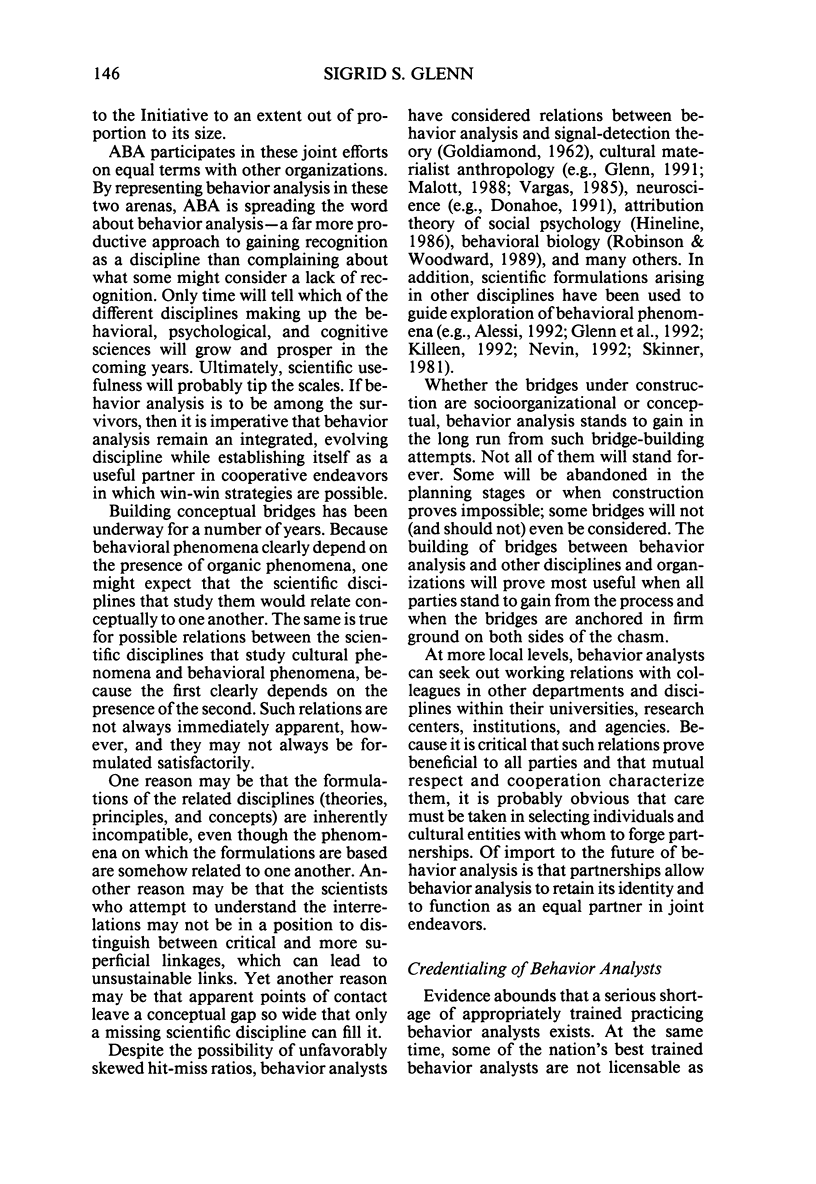
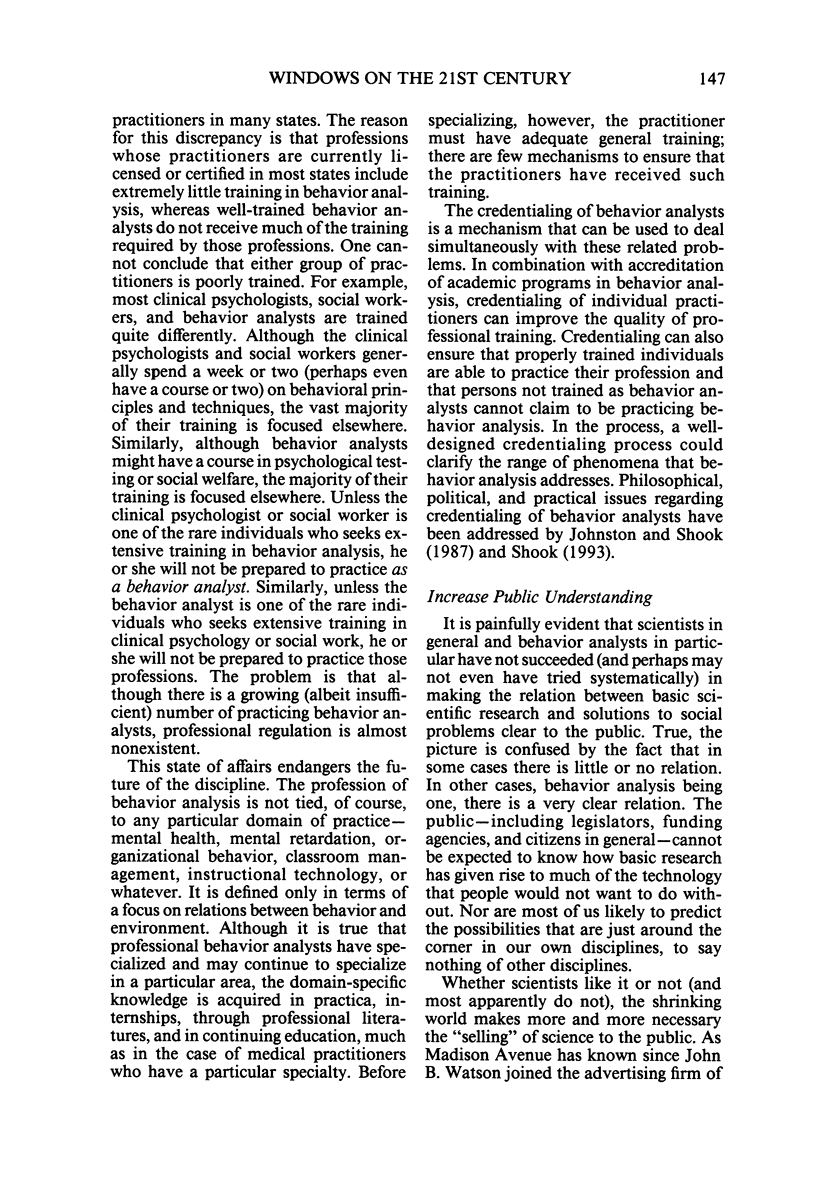

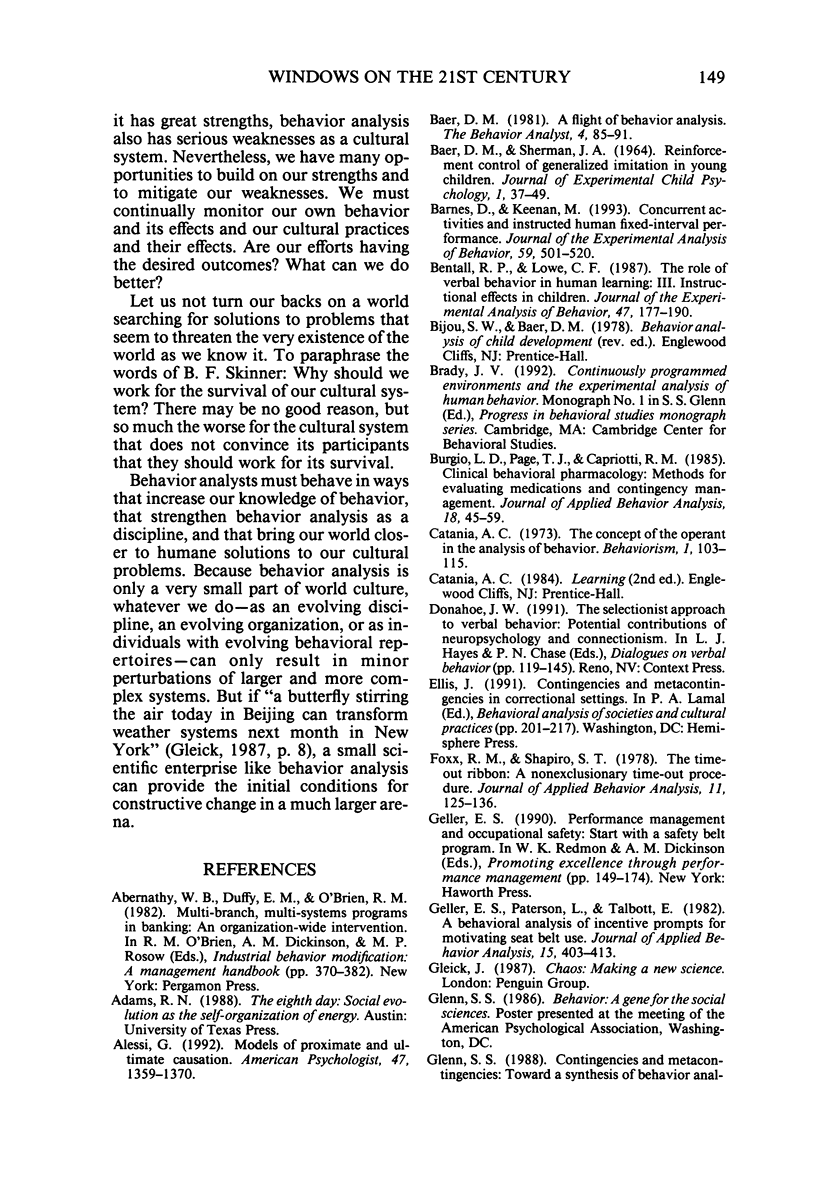
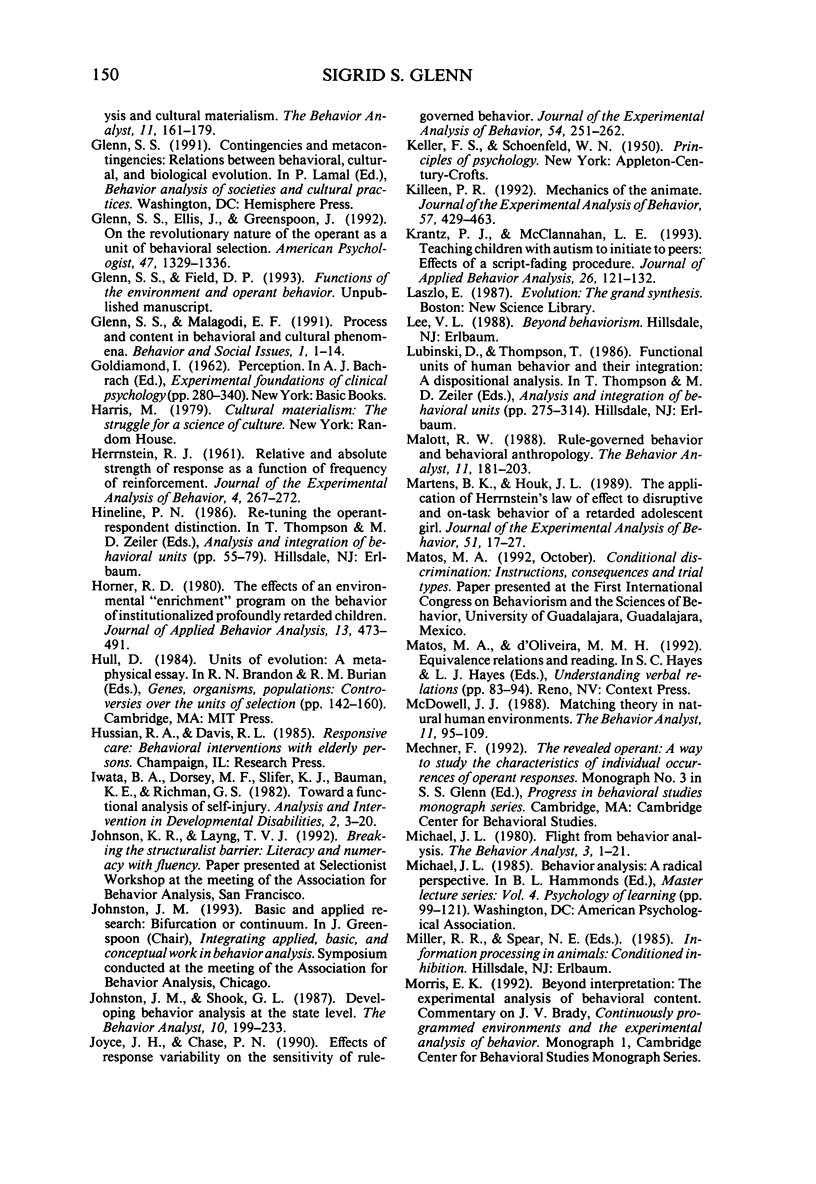
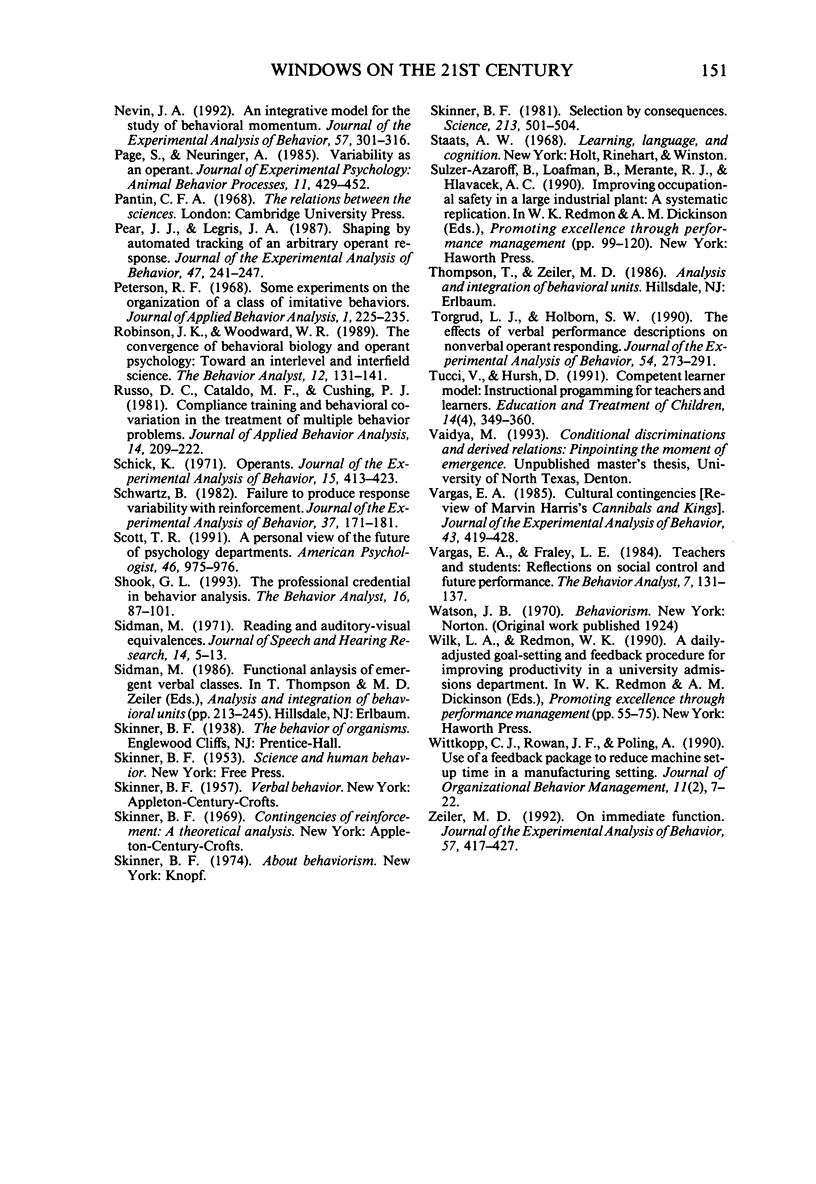
Images in this article
Selected References
These references are in PubMed. This may not be the complete list of references from this article.
- Alessi G. Models of proximate and ultimate causation in psychology. Am Psychol. 1992 Nov;47(11):1359–1370. doi: 10.1037//0003-066x.47.11.1359. [DOI] [PubMed] [Google Scholar]
- Baer D. M. A flight of behavior analysis. Behav Anal. 1981 Fall;4(2):85–91. doi: 10.1007/BF03391857. [DOI] [PMC free article] [PubMed] [Google Scholar]
- Barnes D., Keenan M. Concurrent activities and instructed human fixed-interval performance. J Exp Anal Behav. 1993 May;59(3):501–520. doi: 10.1901/jeab.1993.59-501. [DOI] [PMC free article] [PubMed] [Google Scholar]
- Bentall R. P., Lowe C. F. The role of verbal behavior in human learning: III. Instructional effects in children. J Exp Anal Behav. 1987 Mar;47(2):177–190. doi: 10.1901/jeab.1987.47-177. [DOI] [PMC free article] [PubMed] [Google Scholar]
- Burgio L. D., Page T. J., Capriotti R. M. Clinical behavioral pharmacology: methods for evaluating medications and contingency management. J Appl Behav Anal. 1985 Spring;18(1):45–59. doi: 10.1901/jaba.1985.18-45. [DOI] [PMC free article] [PubMed] [Google Scholar]
- Foxx R. M., Shapiro S. T. The timeout ribbon: a nonexclusionary timeout procedure. J Appl Behav Anal. 1978 Spring;11(1):125–136. doi: 10.1901/jaba.1978.11-125. [DOI] [PMC free article] [PubMed] [Google Scholar]
- Geller E. S., Paterson L., Talbott E. A behavioral analysis of incentive prompts for motivating seat belt use. J Appl Behav Anal. 1982 Fall;15(3):403–413. doi: 10.1901/jaba.1982.15-403. [DOI] [PMC free article] [PubMed] [Google Scholar]
- Glenn S. S. Contingencies and metacontingencies: Toward a synthesis of behavior analysis and cultural materialism. Behav Anal. 1988 Fall;11(2):161–179. doi: 10.1007/BF03392470. [DOI] [PMC free article] [PubMed] [Google Scholar]
- HERRNSTEIN R. J. Relative and absolute strength of response as a function of frequency of reinforcement. J Exp Anal Behav. 1961 Jul;4:267–272. doi: 10.1901/jeab.1961.4-267. [DOI] [PMC free article] [PubMed] [Google Scholar]
- Horner R. D. The effects of an environmental "enrichment" program on the behavior of institutionalized profoundly retarded children. J Appl Behav Anal. 1980 Fall;13(3):473–491. doi: 10.1901/jaba.1980.13-473. [DOI] [PMC free article] [PubMed] [Google Scholar]
- Johnston J. M., Shook G. L. Developing behavior analysis at the state level. Behav Anal. 1987 Fall;10(2):199–233. doi: 10.1007/BF03392431. [DOI] [PMC free article] [PubMed] [Google Scholar]
- Joyce J. H., Chase P. N. Effects of response variability on the sensitivity of rule-governed behavior. J Exp Anal Behav. 1990 Nov;54(3):251–262. doi: 10.1901/jeab.1990.54-251. [DOI] [PMC free article] [PubMed] [Google Scholar]
- Krantz P. J., McClannahan L. E. Teaching children with autism to initiate to peers: effects of a script-fading procedure. J Appl Behav Anal. 1993 Spring;26(1):121–132. doi: 10.1901/jaba.1993.26-121. [DOI] [PMC free article] [PubMed] [Google Scholar]
- Malott R. W. Rule-governed behavior and behavioral anthropology. Behav Anal. 1988 Fall;11(2):181–203. doi: 10.1007/BF03392471. [DOI] [PMC free article] [PubMed] [Google Scholar]
- Martens B. K., Houk J. L. The application of Herrnstein's law of effect to disruptive and on-task behavior of a retarded adolescent girl. J Exp Anal Behav. 1989 Jan;51(1):17–27. doi: 10.1901/jeab.1989.51-17. [DOI] [PMC free article] [PubMed] [Google Scholar]
- McDowell J. J. Matching theory in natural human environments. Behav Anal. 1988 Fall;11(2):95–109. doi: 10.1007/BF03392462. [DOI] [PMC free article] [PubMed] [Google Scholar]
- Michael J. Flight from behavior analysis. Behav Anal. 1980 Fall;3(2):1–21. doi: 10.1007/BF03391838. [DOI] [PMC free article] [PubMed] [Google Scholar]
- Nevin J. A. An integrative model for the study of behavioral momentum. J Exp Anal Behav. 1992 May;57(3):301–316. doi: 10.1901/jeab.1992.57-301. [DOI] [PMC free article] [PubMed] [Google Scholar]
- doi: 10.1901/jeab.1985.43-419. [DOI] [PMC free article] [Google Scholar]
- Pear J. J., Legris J. A. Shaping by automated tracking of an arbitrary operant response. J Exp Anal Behav. 1987 Mar;47(2):241–247. doi: 10.1901/jeab.1987.47-241. [DOI] [PMC free article] [PubMed] [Google Scholar]
- Peterson R. F. Some experiments on the organization of a class of imitative behaviors. J Appl Behav Anal. 1968 Fall;1(3):225–235. doi: 10.1901/jaba.1968.1-225. [DOI] [PMC free article] [PubMed] [Google Scholar]
- Robinson J. K., Woodward W. R. The convergence of behavioral biology and operant psychology: Toward an interlevel and interfield science. Behav Anal. 1989 Fall;12(2):131–141. doi: 10.1007/BF03392490. [DOI] [PMC free article] [PubMed] [Google Scholar]
- Russo D. C., Cataldo M. F., Cushing P. J. Compliance training and behavioral covariation in the treatment of multiple behavior problems. J Appl Behav Anal. 1981 Fall;14(3):209–222. doi: 10.1901/jaba.1981.14-209. [DOI] [PMC free article] [PubMed] [Google Scholar]
- Schick K. Operants. J Exp Anal Behav. 1971 May;15(3):413–423. doi: 10.1901/jeab.1971.15-413. [DOI] [PMC free article] [PubMed] [Google Scholar]
- Schwartz B. Failure to produce response variability with reinforcement. J Exp Anal Behav. 1982 Mar;37(2):171–181. doi: 10.1901/jeab.1982.37-171. [DOI] [PMC free article] [PubMed] [Google Scholar]
- Shook G. L. The professional credential in behavior analysis. Behav Anal. 1993 Spring;16(1):87–101. doi: 10.1007/BF03392614. [DOI] [PMC free article] [PubMed] [Google Scholar]
- Sidman M. Reading and auditory-visual equivalences. J Speech Hear Res. 1971 Mar;14(1):5–13. doi: 10.1044/jshr.1401.05. [DOI] [PubMed] [Google Scholar]
- Skinner B. F. Selection by consequences. Science. 1981 Jul 31;213(4507):501–504. doi: 10.1126/science.7244649. [DOI] [PubMed] [Google Scholar]
- Torgrud L. J., Holborn S. W. The effects of verbal performance descriptions on nonverbal operant responding. J Exp Anal Behav. 1990 Nov;54(3):273–291. doi: 10.1901/jeab.1990.54-273. [DOI] [PMC free article] [PubMed] [Google Scholar]
- Vargas E. A., Fraley L. E. Teachers and students: Reflections on social control and future performance. Behav Anal. 1984 Fall;7(2):131–137. doi: 10.1007/BF03391896. [DOI] [PMC free article] [PubMed] [Google Scholar]




